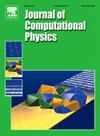Physics-informed neural networks for tsunami inundation modeling
IF 3.8
2区 物理与天体物理
Q2 COMPUTER SCIENCE, INTERDISCIPLINARY APPLICATIONS
引用次数: 0
Abstract
We use physics-informed neural networks for solving the shallow-water equations for tsunami modeling. Physics-informed neural networks are an optimization based approach for solving differential equations that is completely meshless. This substantially simplifies the modeling of the inundation process of tsunamis. While physics-informed neural networks require retraining for each particular new initial condition of the shallow-water equations, we also introduce the use of deep operator networks that can be trained to learn the solution operator instead of a particular solution only and thus provides substantial speed-ups, also compared to classical numerical approaches for tsunami models. We show with several classical benchmarks that our method can model both tsunami propagation and the inundation process exceptionally well.
基于物理信息的海啸淹没模拟神经网络
我们使用物理信息神经网络来求解海啸建模的浅水方程。基于物理信息的神经网络是一种基于优化的方法,用于求解完全无网格的微分方程。这大大简化了海啸淹没过程的建模。虽然基于物理的神经网络需要对浅水方程的每个特定的新初始条件进行重新训练,但我们也引入了深度算子网络的使用,该网络可以被训练来学习解算子,而不仅仅是一个特定的解,因此与经典的海啸模型数值方法相比,也提供了很大的加速。我们用几个经典基准表明,我们的方法可以非常好地模拟海啸传播和淹没过程。
本文章由计算机程序翻译,如有差异,请以英文原文为准。
求助全文
约1分钟内获得全文
求助全文
来源期刊

Journal of Computational Physics
物理-计算机:跨学科应用
CiteScore
7.60
自引率
14.60%
发文量
763
审稿时长
5.8 months
期刊介绍:
Journal of Computational Physics thoroughly treats the computational aspects of physical problems, presenting techniques for the numerical solution of mathematical equations arising in all areas of physics. The journal seeks to emphasize methods that cross disciplinary boundaries.
The Journal of Computational Physics also publishes short notes of 4 pages or less (including figures, tables, and references but excluding title pages). Letters to the Editor commenting on articles already published in this Journal will also be considered. Neither notes nor letters should have an abstract.
 求助内容:
求助内容: 应助结果提醒方式:
应助结果提醒方式:


